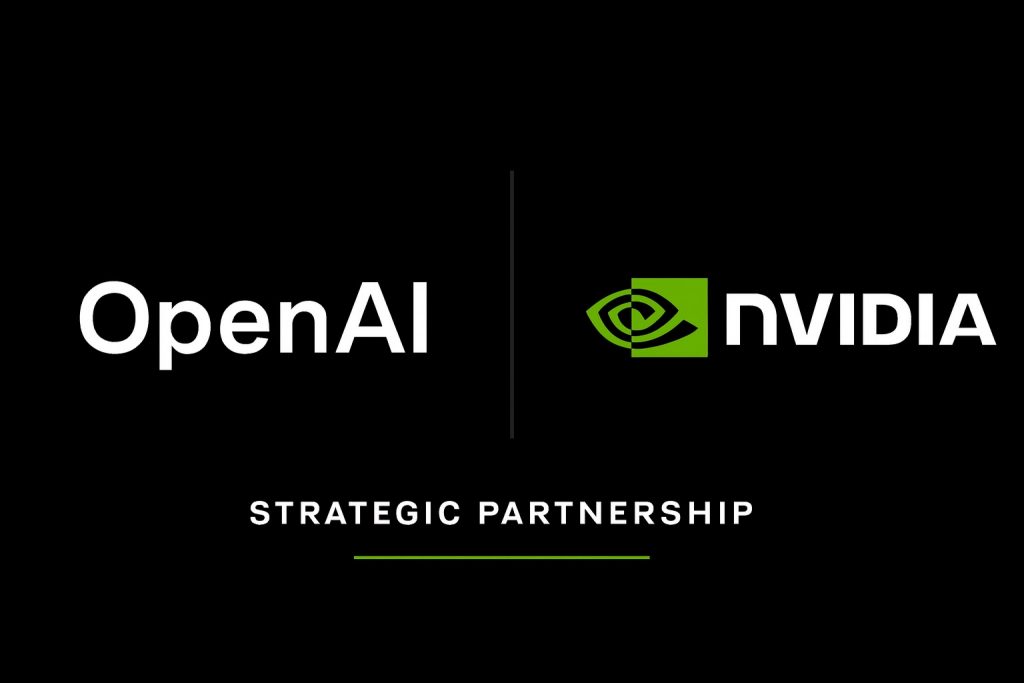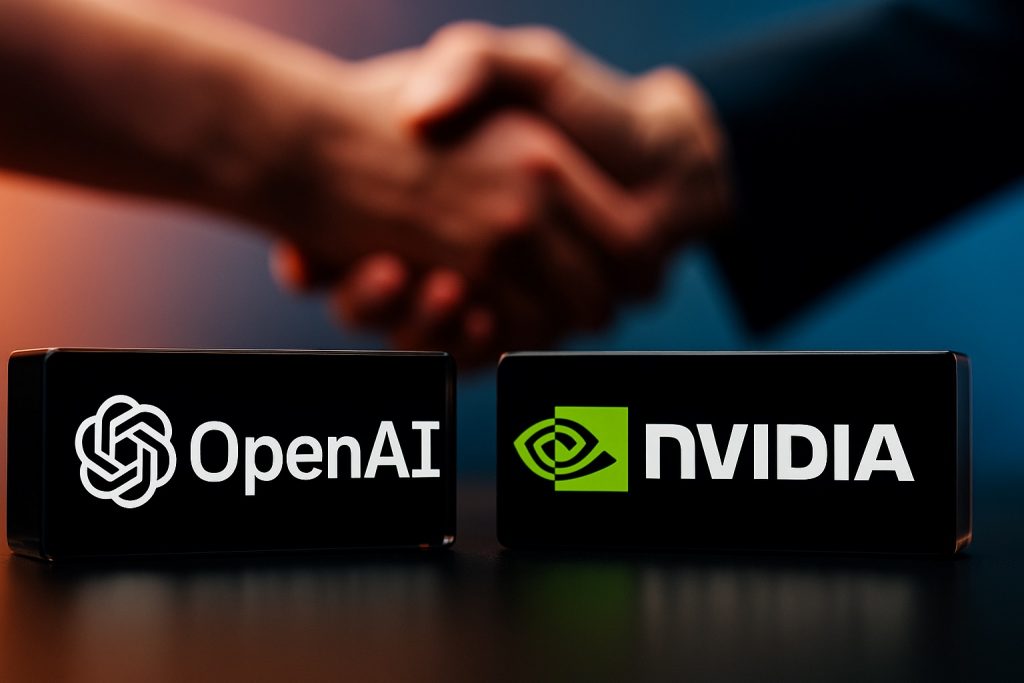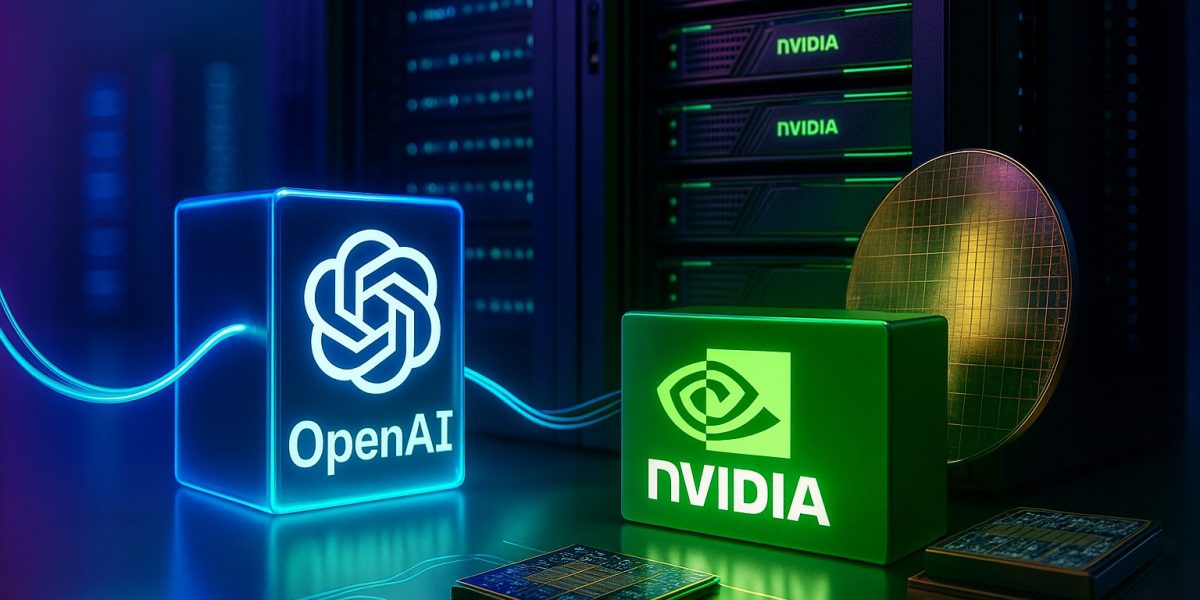Two giants in artificial intelligence and computing hardware have committed to what may be the most substantial infrastructure collaboration the technology sector has witnessed. OpenAI and NVIDIA revealed plans Tuesday for a partnership potentially reaching $100 billion in value, focused on constructing the massive computational backbone needed for next-generation AI systems.
The scope alone sets this apart from typical corporate agreements. The companies will deploy at least 10 gigawatts of NVIDIA computing systems specifically designed for OpenAI’s expanding infrastructure requirements. This translates to millions of GPUs built around NVIDIA’s forthcoming Vera Rubin platform, with the initial gigawatt scheduled to go live during the second half of 2026. Rather than a single massive investment, NVIDIA will progressively commit capital as each gigawatt segment reaches deployment.

Beyond Hardware Sales Into Strategic Integration
Characterizing this as merely a hardware procurement deal would miss the deeper implications. The partnership represents structural integration between organizations that have worked together since OpenAI’s earliest days—though never at this magnitude. Both companies frame the initiative as building infrastructure that can move artificial intelligence “from the labs into the world,” acknowledging that current computational resources create bottlenecks for both development and deployment.
The computational scale involved becomes clearer through comparison: the planned infrastructure will deliver processing power billions of times greater than the initial DGX system NVIDIA supplied to OpenAI back in 2016. That early hardware enabled OpenAI’s first serious model training efforts. This new deployment aims to support something fundamentally more ambitious—the training and inference demands associated with developing what both companies term “superintelligence.”
OpenAI currently serves over 700 million weekly active users, a figure that has grown dramatically as ChatGPT expanded from research project to mainstream platform. Meeting the computational demands of this user base while simultaneously pushing forward research on more capable systems creates infrastructure challenges that standard procurement approaches can’t adequately address. The phased gigawatt deployment model suggests a timeline aligned with OpenAI’s anticipated scaling needs rather than immediate capacity delivery.
Vera Rubin Platform and Deployment Timeline
NVIDIA’s Vera Rubin platform, named after the astronomer who provided evidence for dark matter’s existence, represents the company’s latest GPU architecture optimized specifically for AI workloads. Technical specifications remain partially under wraps, but the platform is designed to deliver substantial improvements in both training efficiency and inference throughput compared to current-generation hardware.
The 2026 timeline for initial deployment indicates both the complexity of building gigawatt-scale infrastructure and the lead times involved in producing millions of specialized processors. A gigawatt of computing power requires not just GPUs but supporting infrastructure—power delivery systems, cooling architecture, networking equipment, and physical facilities capable of handling extraordinary energy and thermal loads.
Each subsequent gigawatt deployment will likely refine approaches based on operational experience with earlier segments. This iterative buildout model allows both companies to adapt infrastructure design as AI model architectures evolve and as they gain practical understanding of scaling challenges that only emerge at this magnitude.
Financial Structure and Strategic Implications
The “up to $100 billion” framing suggests the total investment scales with actual deployment rather than representing committed capital upfront. NVIDIA’s progressive investment model tied to each gigawatt’s deployment creates mutual accountability—OpenAI must successfully deploy and utilize each segment before the next receives funding, while NVIDIA commits to sustained support across what could extend over multiple years.
For NVIDIA, this partnership provides visibility into long-term demand and justifies continued investment in manufacturing capacity and architectural development specifically optimized for frontier AI research. The company has positioned itself as the dominant GPU provider for AI workloads, but maintaining that position requires understanding and meeting the requirements of organizations pushing model capabilities furthest.
OpenAI gains more than hardware access. The deep integration implied by “strategic partnership” language likely includes co-development on optimization, priority access to new architectures, and technical collaboration that goes beyond standard vendor-customer relationships. As the company races toward artificial general intelligence and beyond, having guaranteed access to cutting-edge computational resources removes a major variable from development planning.
The infrastructure being built will serve dual purposes: training progressively larger and more capable models while simultaneously handling inference demands from hundreds of millions of users. Balancing these competing resource requirements across a 10+ gigawatt deployment represents a complex optimization challenge that will likely evolve as model architectures and usage patterns shift.

Competitive Context and Industry Implications
This partnership arrives as major technology companies compete intensely for GPU access and AI infrastructure capacity. Microsoft, Google, Amazon, and Meta have all announced multi-billion dollar infrastructure investments, but the scale and specificity of the OpenAI-NVIDIA arrangement stands apart. Where other companies are building general-purpose cloud infrastructure that happens to support AI workloads, this deployment targets frontier AI research and deployment specifically.
The energy requirements alone—10+ gigawatts represents more power than many small countries consume—will require creative solutions around power sourcing, cooling, and environmental impact. Both companies have committed to sustainability goals that will need reconciliation with infrastructure operating at this magnitude.
Whether this infrastructure ultimately enables the “superintelligence” both companies reference remains an open question that extends beyond computational capacity into fundamental questions about AI architectures, training methodologies, and whether current approaches can scale to human-level intelligence or beyond. What’s certain: OpenAI and NVIDIA are placing an unprecedented bet that they can, and that the computational requirements to find out dwarf anything the industry has attempted previously.




Post a comment